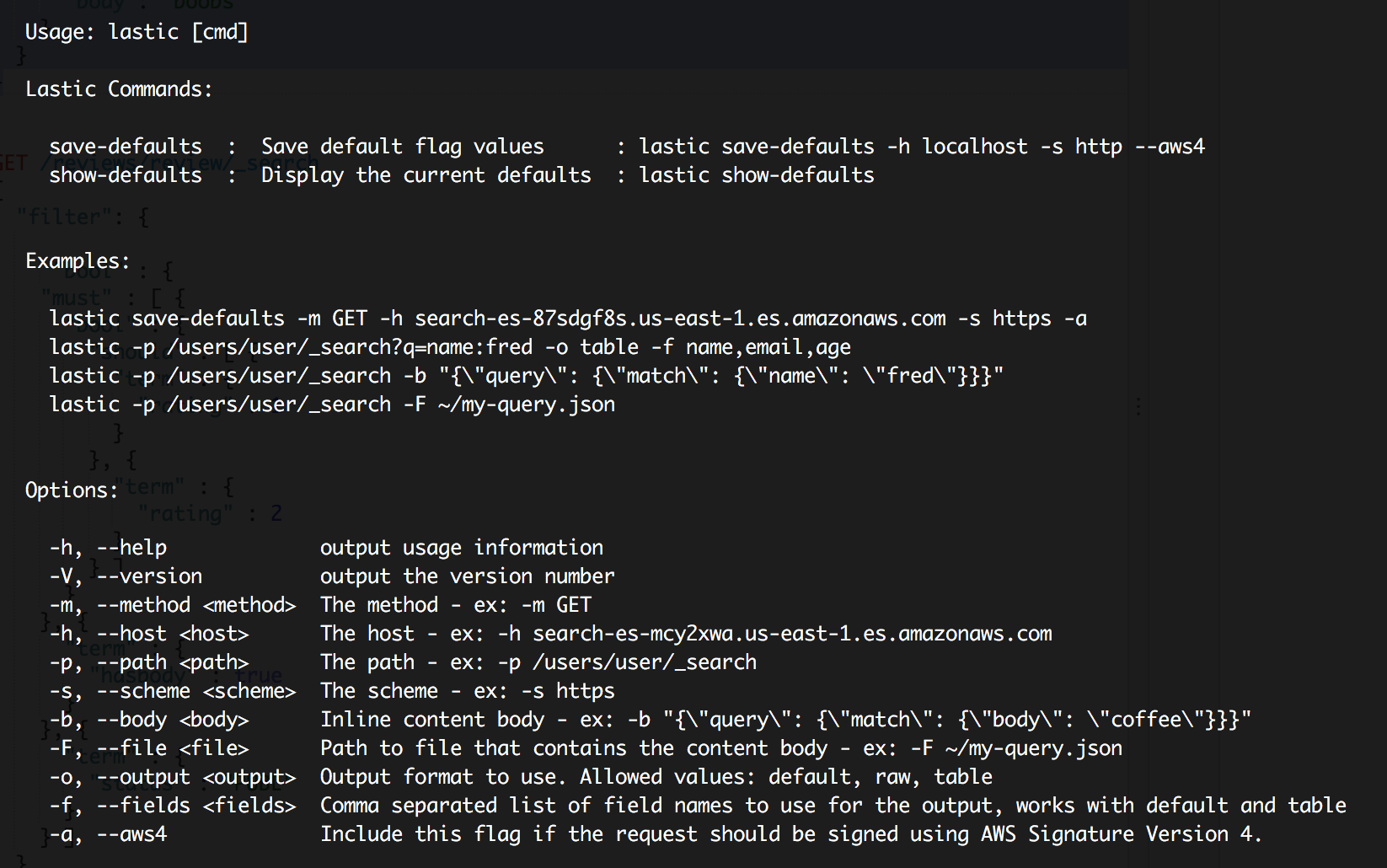Lastic
A command line tool for Elasticsearch with AWS support
What's Lastic?
Lastic is a command line tool that allows you to make Elasticsearch API calls.
Why does this exist? Why not just use curl?
Lastic exists to make it easy to send curl like requests to the AWS Elasticsearch service which requires AWS Signature Version 4 to authenticate. Also, since this tool is Elasticsearch specific it includes some specific features to make working with Elasticsearch easier.
Usage
# install it (globally) $ npm install lastic -g # show the help $ lastic --help # config it $ lastic save-defaults -m GET -h search-es-87sdgf8s.us-east-1.es.amazonaws.com -s https -a # use it $ lastic -p /users/user/_search?q=name:fred -o table -f name,email,age Querying Elasticsearch
To query Elasticsearch with Lastic no command argument is required.
lastic -m GET -s http -h localhost:9200 -p /users/user/_search?q=name:fred
To make your life easier, you can save the flags that don't change very often as your defaults.
lastic save-defaults -m GET -s http -h localhost:9200
Now you can simply execute the above query like this..
lastic -p /users/user/_search?q=name:fred
Lastic will use default values for any required flags that are missing. The defaults can be modified using the command listed below.
Commands
- save-defaults : This will save default flag values to save you some typing. This is really useful for the host, method, scheme and aws4 flags.
lastic save-defaults -m GET -h search-es-87sdgf8s.us-east-1.es.amazonaws.com -s https -a
- show-defaults : This will display the current default flag values.
lastic show-defaults
Output format
Lastic has three output formats: default, raw and table. The output format can be specified with the -o flag. If you only wish to view a subset of the response the -f flag can be used to specify the fields to view. The fields flag only works with search results and with the default and table output formats.
- default: A simple to-string of the response data. Deeply nested objects will be truncated. Supports the
-fflag. - raw: Outputs the raw JSON response.
- table: A table view of the selected fields specified by the
-fflag. Only works with search results.
Example
lastic -p /users/user/_search?q=name:fred -o table -f name,email,age
AWS credentials
Note: AWS credentials are only needed when using the
-aflag.
Lastic uses your same AWS credentials that the AWS CLI uses. It will look for your Access Key ID and Secret Access Key located at ~/.aws/credentials. If you are already using the AWS CLI, then you shouldn't need to do anything additional.
You can read more about how to set this up in the AWS CLI Getting Started Guide

